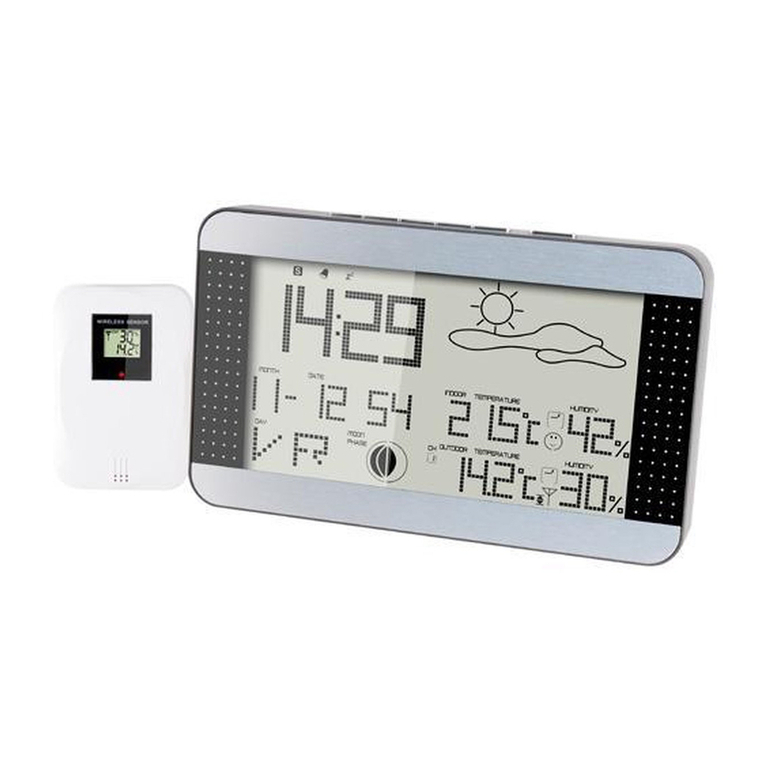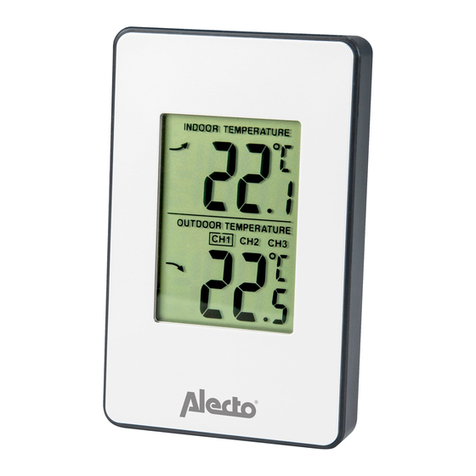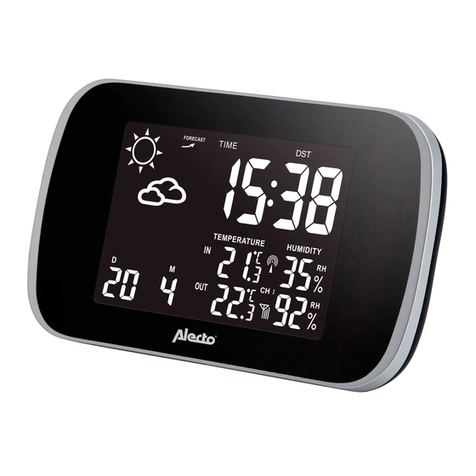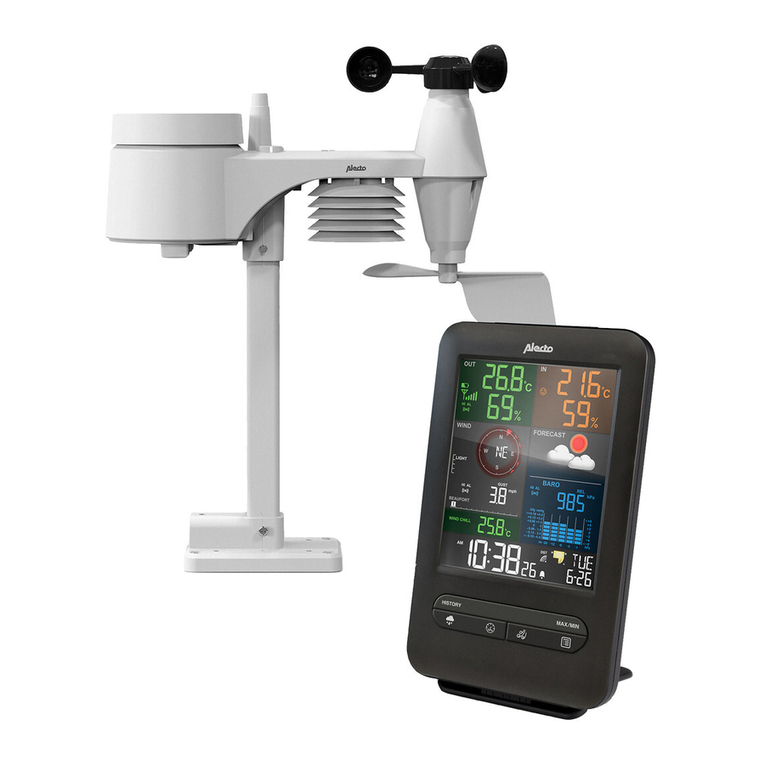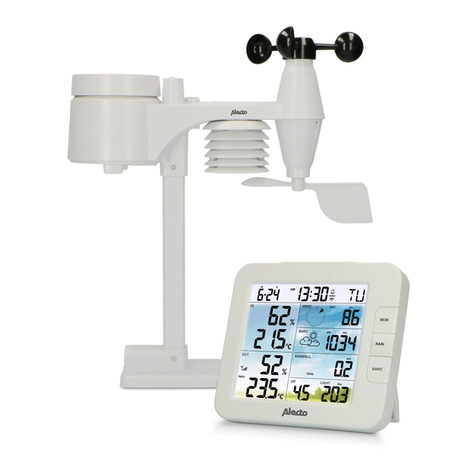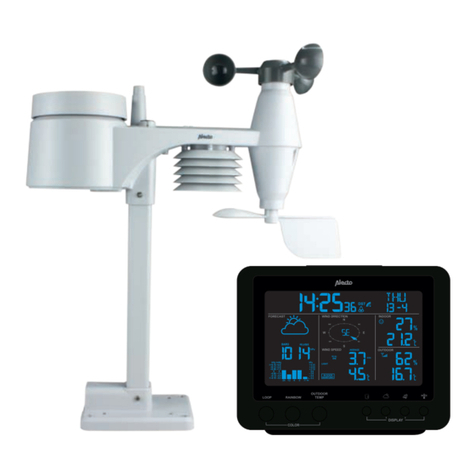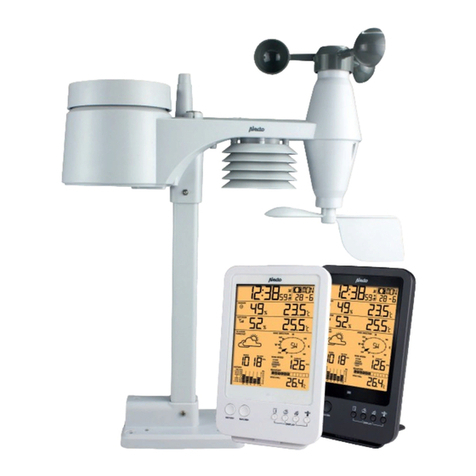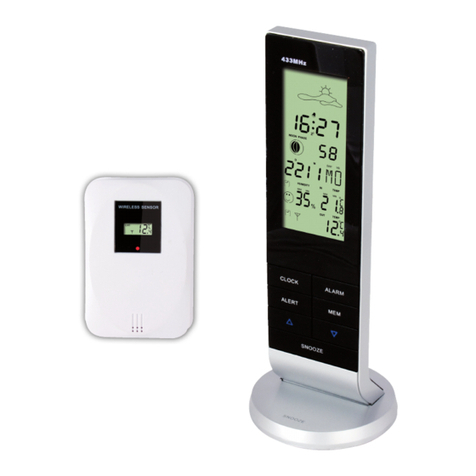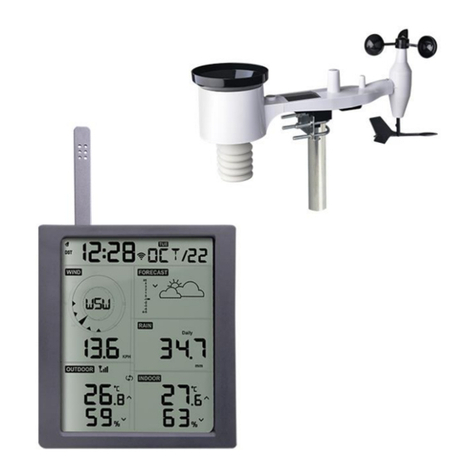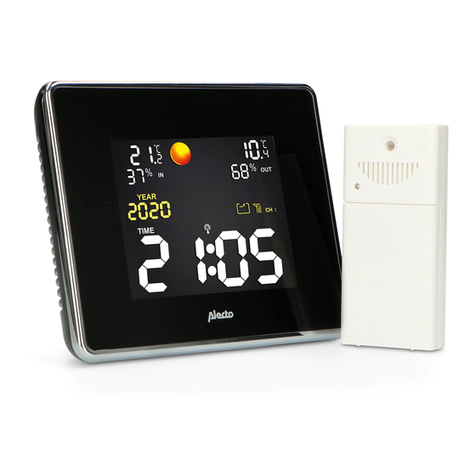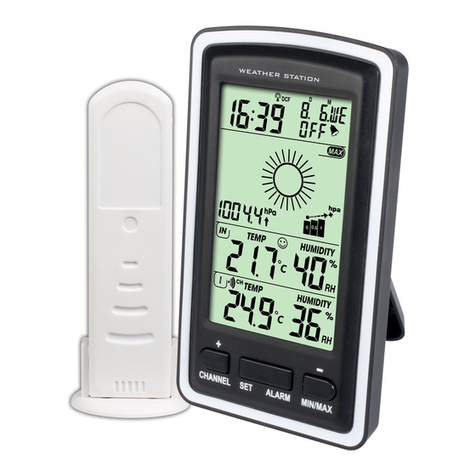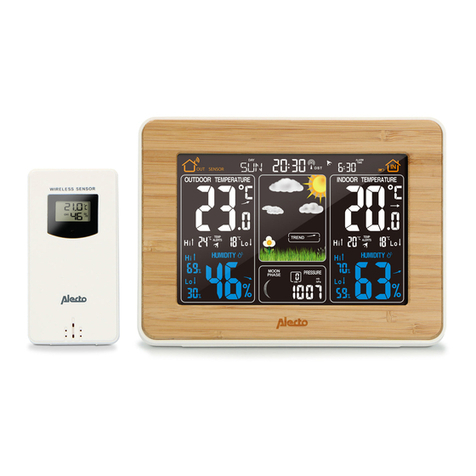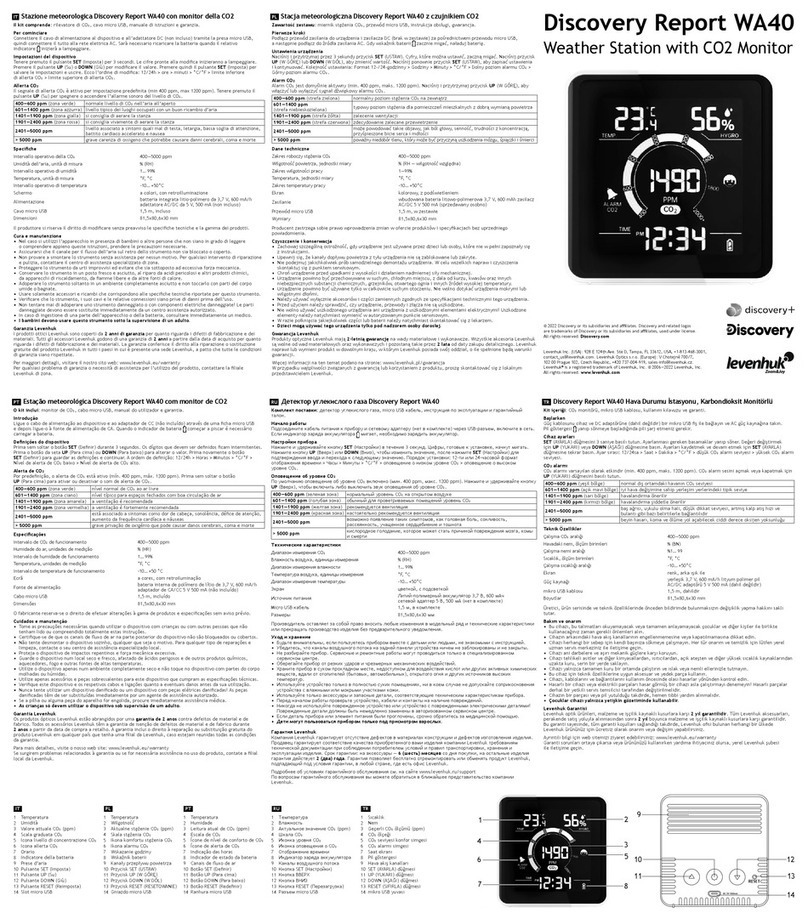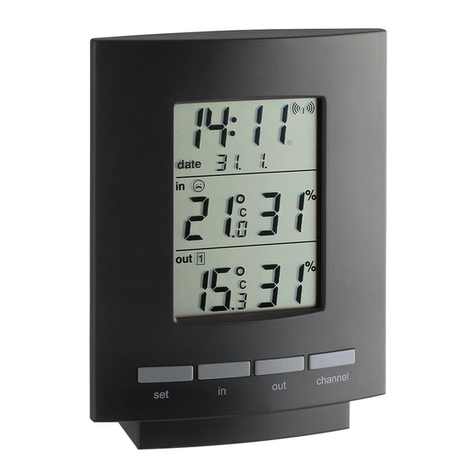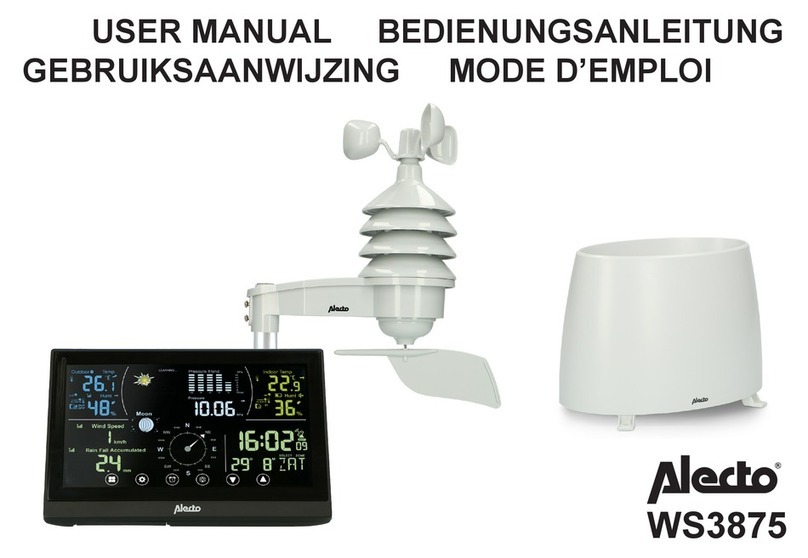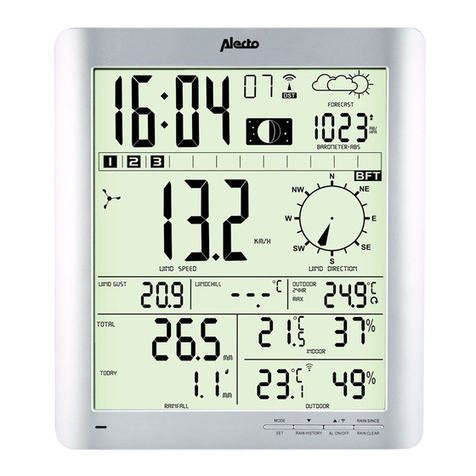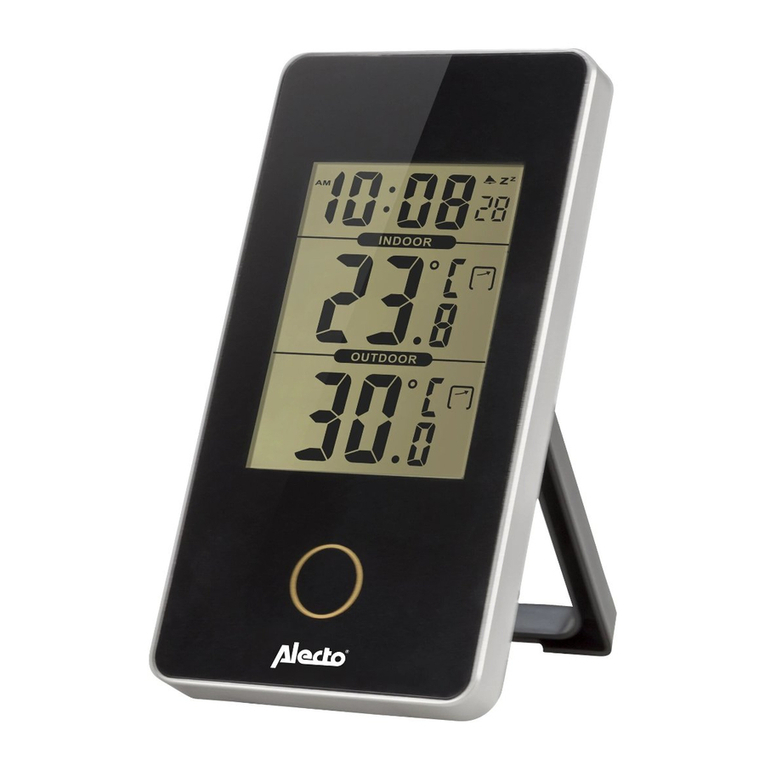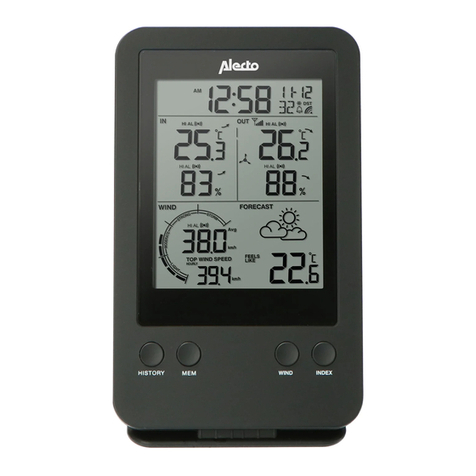
7
3.4 Clock:
Introduction
The WS-4700 is provided with a built-in DCF receiver which receives the DCF time signal from
Frankfurt. This signal ensures that the clock shows the time very accurately, provided a strong enough
signal is being received.
Automatically:
As soon as you insert the batteries into the indoor unit, the clock will start searching for the DCF
radio signal for the time while the antenna symbol is flashing. After several seconds or minutes the
WS-4700 will start showing the correct time. In extreme cases, it can take over a day before the DCF
time is shown.
Manually:
If the clock cannot receive the radio signal or cannot receive it well enough, you can set the clock
manually as follows:
1. press and hold the button for 2 seconds, 12Hr or 24Hr will appear in the display
2. Use /to set the time format, then briefly press the button
3. use /to set the hours and then briefly press the button
4. use /to set the minutes and then briefly press the button
5. use /to set the seconds to 0 (this allows you to have the clock run synchronously with your own
clock) and then briefly press the button
6. use /to set the year and then briefly press the button
7. use /to set the month and then briefly press the button
8. use /to set the date and then briefly press the button
9. use /to set the hour difference compared to the DCF time. E.g. for use in the Benelux select ‘0’
and then briefly press the button.
10. use /to set the language in which the day must be displayed, you may choose from: EN (English),
FR (French), DE (German), ES (Spanish) or IT (Italian), now briefly press the button.
11. use /to determine whether the clock must switch to daylight saving time or standard time
automatically (AUTO) or whether you prefer to do this manually (OFF), now briefly press the button.
The clock is now set manually.
When the DCF receiver is enabled and a strong signal is being received, the receiver will overwrite the
clock display.
Switching the DCF receiver on/off:
You can turn off the DCF receiver as follows, allowing you to have only the time and date shown on the
display according to your programming:
• turn off: press and hold the RCC OFF button at the rear of the indoor unit for 8 seconds until
the antenna symbol disappears.
You can turn the receiver back on as follows:
• turn on: press and hold the RCC ON button at the rear of the indoor unit for 8 seconds until
the antenna symbol starts flashing.
The symbol in the upper middle part of the display shows the status of the DCF clock:
no symbol: the DCF receiver is disabled; the displayed time is provided by the internal clock
of the WS-4700
flashing: the DCF receiver is enabled and is searching for the DCF signal; the displayed
time is provided by the internal clock of the WS-4700
remains lit: the DCF receiver is enabled and is receiving the DCF signal; the displayed time
and date are provided by the DCF atomic clock in Frankfurt
3.5 To reset measurement data:
After the installation is completed, press and hold the HISTORY button for 10 seconds to delete all of
the measurements made up until that moment. This ensures that you won’t see any measurements at a
later time that were caused by movements during the installation.
